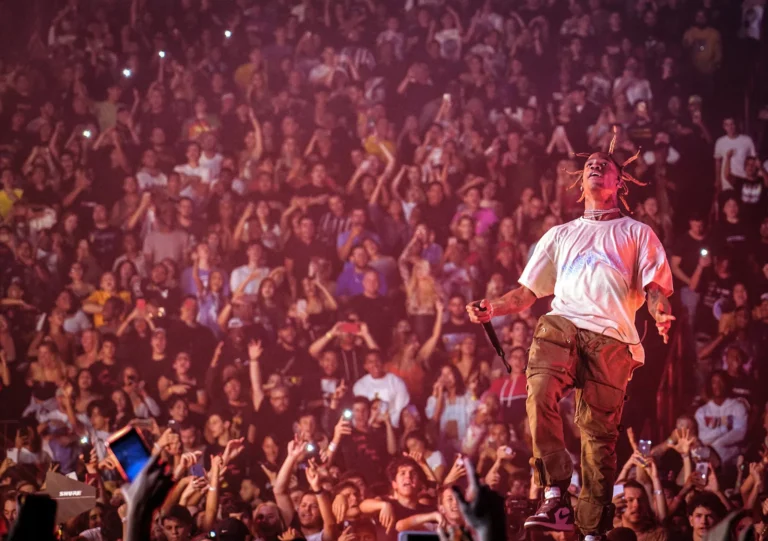Travis Scott isn’t just a rapper—he’s a sonic architect who designs his concerts like amusement park rides, creating full-body experiences that blend explosive soundscapes with immersive atmospheres. Central to that experience is the setlist: the carefully chosen collection of songs performed in a specific order at each show. For Travis, the setlist isn’t just about playing hits. It’s a musical blueprint that guides the emotional rhythm of the night—when to rage, when to reflect, when to jump, and when to just let the sound wash over you.
A Travis Scott concert setlist is engineered to evolve. In his early days, the setlists were raw and experimental, filled with dark, ambient beats and high-tempo trap from his mixtapes Owl Pharaoh and Days Before Rodeo. As his discography grew, so did the structure and power of his live sets. Albums like Rodeo, Birds in the Trap Sing McKnight, and Astroworld brought anthems that demanded pyrotechnics, rollercoaster rigs, and moshing thousands. Now, with Utopia in the mix, his setlists are more refined yet chaotic in the best way—curated for both sonic storytelling and high-octane crowd engagement.
These setlists serve multiple roles: they reflect Travis’s creative evolution, they honor fan favorites, and they shape the visual and emotional arc of his performances. In this article, we’ll break down his Top 50 Concert Setlists, grouped into five chronological phases. Each group contains 10 carefully curated setlists, followed by a long, reflective paragraph that explains how that era shaped Travis’s career and why those performances still resonate.
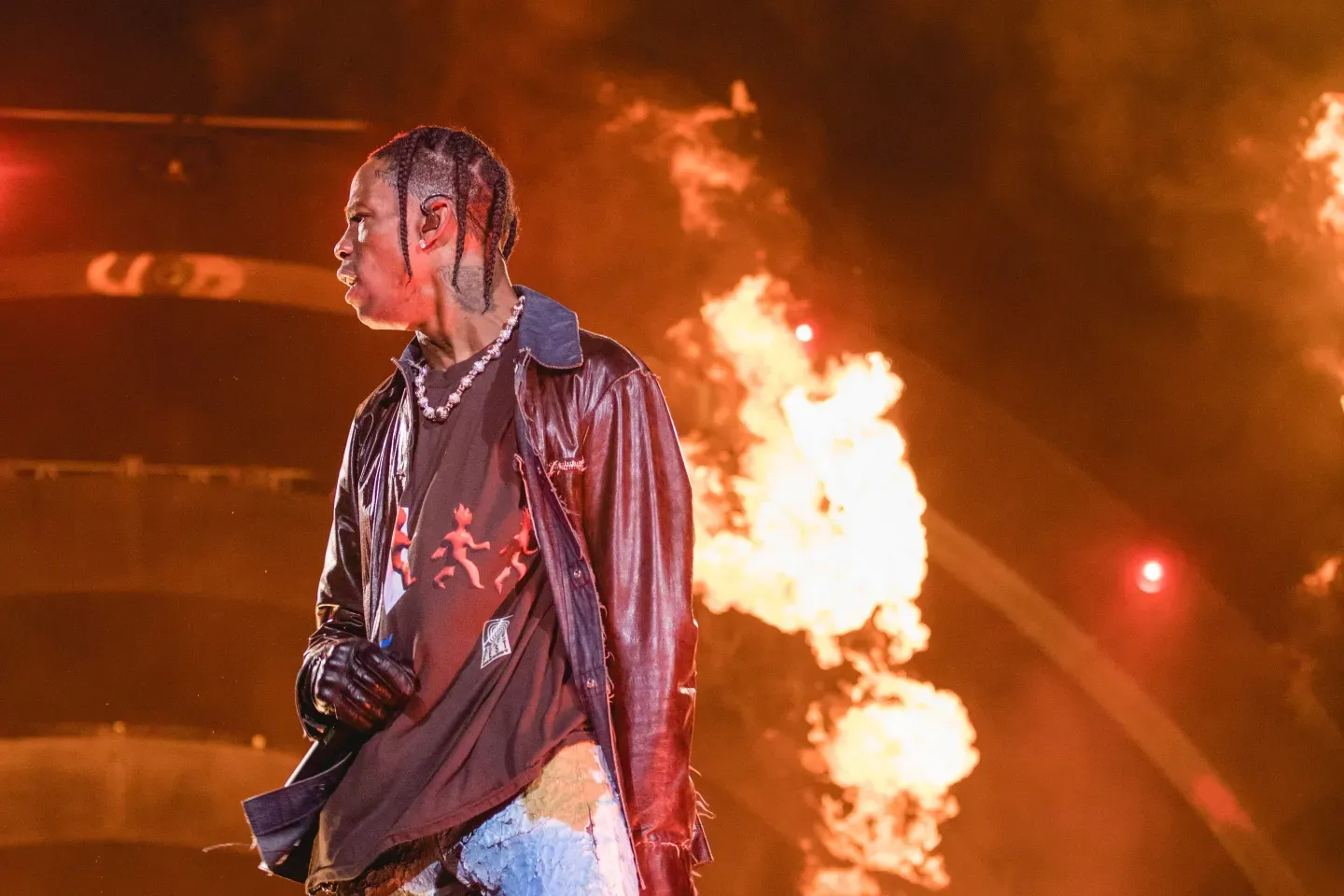
The Early Flame
This first era captures the essence of Travis Scott’s breakout years—raw, hungry, and experimental. These setlists represent the years when Travis was still proving himself in small clubs, festival side stages, and opening sets. Without the giant rollercoasters or headline billing, Travis had to rely on sheer performance energy and the loyalty of early fans to elevate the room. His setlists were aggressive and unrelenting, a true reflection of the sound he was pioneering: dark, ambient, and trap-heavy. These shows featured heavy doses of Owl Pharaoh and Days Before Rodeo, loaded with now-classic early anthems like “Quintana,” “Upper Echelon,” and “Mamacita.” These songs, often performed with remix-style transitions and raw emotion, helped build a cult-like following. This era’s setlists were less about polish and more about pure rage, laying the foundation for the chaos and creativity to come.
-
Owl Pharaoh Showcase (2013): Introduced live versions of “Upper Echelon,” “Blocka La Flame,” and “Bad Mood.”
-
SXSW Performance (2014): A landmark moment for Travis, performing “Quintana” and “Uptown” with live transitions.
-
Days Before Rodeo Tour Stop – Dallas (2014): Setlist included “Don’t Play,” “Backyard,” and the moody “Grey.”
-
Opening for The Weeknd – Toronto (2015): Played to massive crowds with “Antidote,” “Pray 4 Love,” and “Piss On Your Grave.”
-
Made in America Festival (2015): Fast-paced set with “3500,” “Nightcrawler,” and “Oh My Dis Side.”
-
BBC 1Xtra Live – London (2015): A more global-focused setlist featuring “90210” and “Drugs You Should Try It.”
-
Rodeo Tour Kickoff – LA (2015): Intimate performance with deep cuts from Rodeo, like “Impossible” and “Maria I’m Drunk.”
-
Lollapalooza Chicago (2015): Festival chaos with “Antidote” and “Upper Echelon” closing the set.
-
Summer Jam NYC (2015): Delivered a short, impactful set including “3500” and “Mamacita.”
-
Apple Music Festival – London (2015): A blend of crowd-pleasers and slow burners like “Wasted” and “Sloppy Toppy.”
These early performances were raw and visceral, a reflection of Travis Scott’s underground momentum. Without massive budgets or stadium crowds, he built his following through intensity, track selection, and pure stage charisma. Every setlist during this era was a declaration of intent—Travis Scott was here not to entertain, but to dominate.

The Rise of the Birds
This group of setlists marks the moment Travis Scott began transitioning from the underground to full-blown mainstream icon. After the release of Rodeo, which gave him massive hits like “Antidote” and “3500,” he followed up with Birds in the Trap Sing McKnight—a project that proved he was no longer just a feature artist or mixtape legend. The album was a complete sonic experience, blending trap, R&B, psychedelia, and ambient vibes into a project that dominated both headphones and stadium speakers. And that same energy translated to his live performances, which were now larger, more conceptual, and full of fire—both literally and figuratively.
In this phase, the setlists evolved beyond chaos for chaos’ sake. Travis started to shape his shows with more structure: opening with mood-setters like “The Ends” or “Way Back,” gradually ramping up energy with “Goosebumps” or “Through the Late Night,” and then going nuclear with closers like “Antidote” or “Pick Up the Phone.” The visuals were becoming more psychedelic, the lighting more coordinated, and the crowd control more deliberate. You could feel the shift—these weren’t just concerts anymore, they were full-blown events. Fans weren’t just coming to hear their favorite songs—they were coming to experience them.
-
Birds Eye View Tour – Chicago (2017): Travis opened with “The Ends,” setting a moody tone, then built toward madness with “Goosebumps,” “Beibs in the Trap,” and “Sweet Sweet.” “Antidote” and “Pick Up the Phone” closed the set with a firestorm.
-
Rolling Loud Miami (2017): Featured a mix of new and classic tracks, including “Way Back,” “Through the Late Night,” and “Don’t Play.” The performance of “Goosebumps” broke festival attendance noise records.
-
Coachella Valley Music and Arts Festival (2017): A career-defining set. Performed “Coordinate,” “Mamacita,” “Butterfly Effect” (just released at the time), and “90210,” showcasing his versatility across multiple sonic moods.
-
Birds Eye View – New York (2017): Emphasized storytelling in the order of songs—“First Take,” “Lose,” “Outside,” and “Wonderful” were sequenced to mimic the rise and fall of a night in the trap.
-
Lollapalooza Paris (2017): A global reach moment. His setlist included “A-Team,” “Nightcrawler,” and “Way Back.” The crowd’s interaction with “Antidote” echoed across continents, proof of his international rise.
-
Kendrick Lamar’s DAMN. Tour Opening Set (2017): Travis opened for Kendrick and played a tightly packed, explosive set featuring “Butterfly Effect,” “Goosebumps,” “Pick Up the Phone,” and “3500.” He famously rode a mechanical bird over the audience.
-
Governors Ball NYC (2017): This setlist blended Rodeo and Birds—“Maria I’m Drunk,” “The Ends,” and “Through the Late Night.” High energy. Maximum bounce.
-
BBC Radio 1 Big Weekend (2017): Travis embraced his UK fanbase with a shorter set built around hits like “Goosebumps,” “Antidote,” and “Pick Up the Phone,” performed in succession with zero breaks.
-
Wireless Festival – London (2017): Opened with “Sweet Sweet” and moved into a high-energy trio of “Mamacita,” “3500,” and “Way Back.” Closed the set with “Goosebumps” played twice by crowd demand.
-
Astroworld Preview Show – Houston Warehouse Party (Late 2017): An intimate set where Travis tested early versions of Astroworld material. Mixed unreleased tracks with “Wonderful,” “Goosebumps,” and “Butterfly Effect.”
This group of setlists captured Travis Scott’s emergence as a top-tier headliner. His shows were now becoming destinations in themselves. He wasn’t just riding the wave—he was building the tsunami. With Birds in the Trap, he fully leaned into his spacey, ambient trap aesthetic, crafting mood-driven shows that blurred the line between rave and ritual. And the fans? They didn’t just sing along—they raged. They moshed. They screamed every lyric. And they followed him from festival to festival, show to show, ready to be swept up in the next sonic whirlwind.
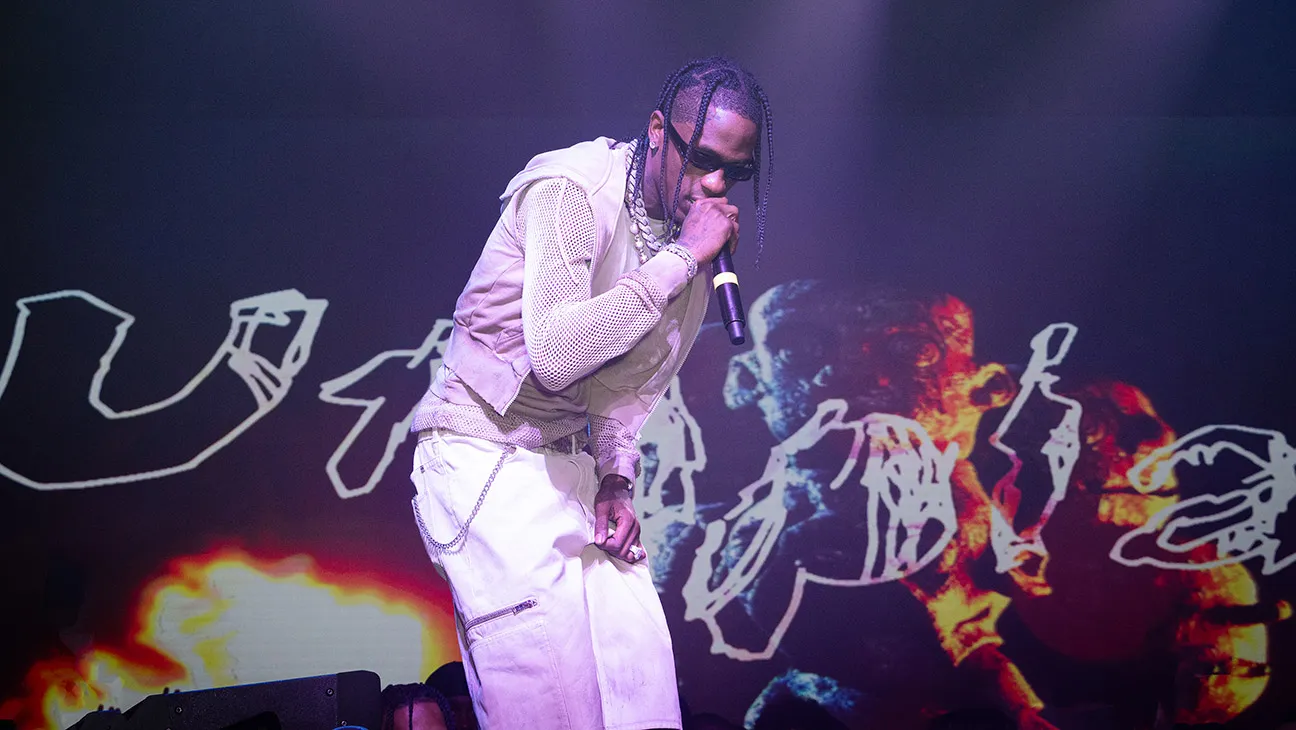
Entering Astroworld
This group of setlists represents the moment Travis Scott fully transformed from a superstar into a global phenomenon. The release of Astroworld in August 2018 wasn’t just a music event—it was a cultural movement. The album’s success was meteoric, with tracks like “Sicko Mode,” “Stargazing,” and “Yosemite” climbing charts and dominating playlists. But it was the live performances of these songs that turned Astroworld into an unforgettable era. Travis Scott didn’t just perform these tracks—he created an actual theme park experience around them. From rollercoasters suspended above fans to fog-blasting flame throwers and psychedelic visuals, the Astroworld: Wish You Were Here tour changed the expectations for rap concerts.
Setlists during this era became more cinematic, arranged to mimic the emotional and sonic arc of the album. Shows often opened with “Stargazing,” a spacey, haunting intro that transported audiences into Travis’s psychedelic universe. Then came the transitions—jumps into high-energy tracks like “Carousel,” “No Bystanders,” and “Sicko Mode” to get the crowd into mosh mode. Midway through, he’d slow the pace with reflective tracks like “Stop Trying to Be God” and “R.I.P. Screw” before ramping back up for a fiery finale with “Goosebumps,” “Yosemite,” or “Can’t Say.” These setlists were not random—they were carefully structured for maximum emotional and visual impact, and each show felt like stepping into another planet built by Travis himself.
-
Astroworld Tour Opening Night – Baltimore (2018): Setlist began with “Stargazing,” followed by “Carousel,” “No Bystanders,” “Stop Trying to Be God,” “Yosemite,” and closed with a pyro-filled “Sicko Mode.”
-
Madison Square Garden – New York City (2018): Iconic show featuring the full Astroworld sequence, plus surprise appearances and fan-favorite deeper cuts like “90210” and “Skyfall.”
-
Rolling Loud Miami (2019): Headliner set with “Can’t Say,” “Skeletons,” and “Stargazing,” ending with “Sicko Mode” as fireworks filled the sky.
-
Lollapalooza Chicago (2019): Travis mixed in throwbacks like “Upper Echelon” with new Astroworld anthems. Crowd interaction on “Goosebumps” caused a near-earthquake reading.
-
Astroworld Festival – Houston (2018): His own curated festival featured a sprawling setlist including “Houstonfornication,” “Butterfly Effect,” “Yosemite,” and hometown shoutouts. Emotional peak of the tour.
-
O2 Arena – London (2019): UK fans were treated to a mega setlist including “No Bystanders,” “Stargazing,” “5% Tint,” and a dramatic rendition of “Stop Trying to Be God.”
-
NBA All-Star Weekend Performance (2019): A medley-style setlist including “Sicko Mode,” “Goosebumps,” “Antidote,” and “Watch.” Energy packed into a shorter timeframe.
-
Coachella 2019 – Headline Set: Delivered a jaw-dropping show with full theme park visuals. Performed “Carousel,” “Skeletons,” “Can’t Say,” “Drugs You Should Try It,” and “Houstonfornication.”
-
Astroworld Tour – Los Angeles (2019): Included a rare performance of “Coffee Bean” mid-set, along with a booming version of “Who? What!” and a double encore of “Sicko Mode.”
-
Wish You Were Here Tour – Paris (2019): A global high-point. “Yosemite,” “Butterfly Effect,” “Carousel,” and “Stop Trying to Be God” created an atmosphere that felt like watching the album unfold in 4D.
This group of setlists defined a new level of artistry for Travis Scott. He didn’t just give fans a playlist; he gave them an environment, a narrative, a universe. The shows were unforgettable not just because of the songs, but because of how he performed them—suspended in mid-air, surrounded by flames, lost in neon fog, with 20,000 fans screaming every lyric back at him. Every transition, every tempo change, every drop in the setlist was orchestrated for maximum chaos and catharsis. The Astroworld era was a creative explosion that elevated the setlist from a performance tool to a theatrical script—and Travis Scott, its master conductor.
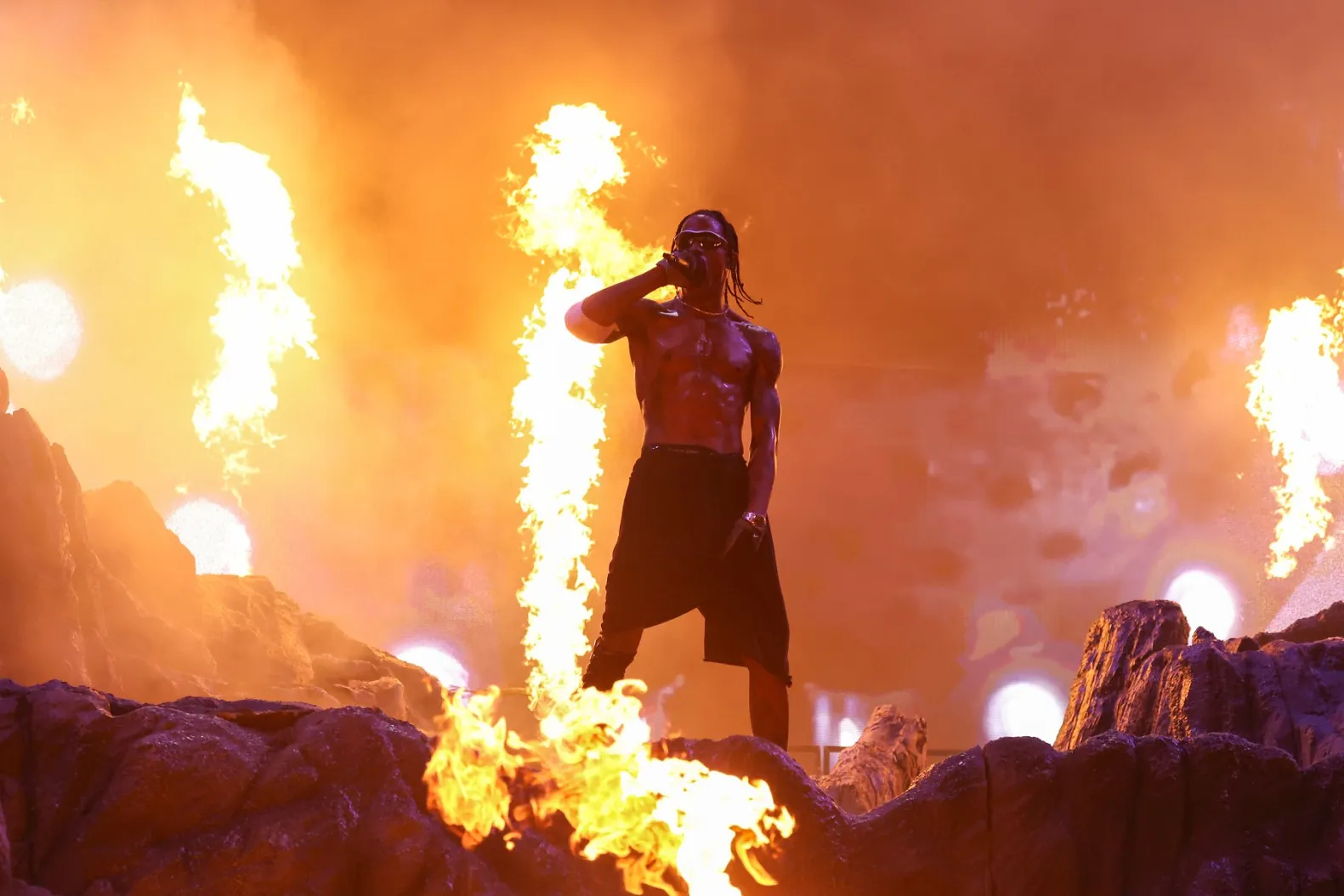
Between Worlds – Post-Astroworld and Utopia Tease
Following the global impact of Astroworld, Travis Scott entered a new chapter where every performance carried not only the energy of his biggest hits but also the burden of expectation. Fans were waiting for the next album. Speculation around Utopia began building in 2020, and every setlist in this period carried a sense of mystery. What would he perform? Would there be new material? Would he change the formula or raise the stakes again?
This group of setlists occurred during a time when Travis was solidifying his reputation as a live performance titan. He was no longer just a rapper—he was a cultural force who could headline festivals, launch his own carnival-like experiences, and partner with brands like Fortnite and Dior. His shows remained high-octane spectacles, but they also became moments of suspense and narrative shaping. Each setlist was a hybrid of nostalgia (with crowd favorites from Rodeo, Birds, and Astroworld) and hints at the future (Utopia snippets, new beats, and strategic transitions).
These performances also had to adapt to a rapidly changing world. Amid the COVID-19 pandemic, Travis Scott explored virtual concerts, performing in digital worlds like Fortnite and keeping fan engagement alive despite physical distance. This was not just innovation—it was survival and reinvention.
-
Astroworld Festival 2019 – Houston: Travis doubled down on his homecoming with a setlist that opened with “Stargazing” and “Carousel,” dipped into “Maria I’m Drunk,” “R.I.P. Screw,” and ended with “Sicko Mode” played back-to-back. He hinted at new sounds between songs.
-
Day N Vegas Festival (2019): Combined hits like “Pick Up the Phone,” “Yosemite,” and “Antidote” with unreleased instrumentals as transitions. A slow, spacey intro opened the set—possibly early Utopia experimentation.
-
Rolling Loud Los Angeles (2019): Introduced a new stage setup and performed “Highest in the Room” live for one of the first times. The crowd erupted, and it became a centerpiece of this setlist.
-
Travis Scott x Fortnite Astronomical Event (2020): A groundbreaking virtual setlist. Performed “Sicko Mode,” “Stargazing,” “Goosebumps,” and “Highest in the Room” inside a digital world where Travis towered over players. A defining pop culture moment.
-
Made in America Festival (2021): Focused heavily on fan engagement with “Butterfly Effect,” “No Bystanders,” “Skeletons,” and a slowed-down “Stop Trying to Be God.” Introduced new vocal samples and extended transitions.
-
Summer Smash Festival – Chicago (2021): High-energy setlist built around rage bangers—“Way Back,” “Mamacita,” “Don’t Play,” and a heavy-metal-leaning remix of “Goosebumps.” A shift in sonic tone hinted at Utopia’s direction.
-
Miami Liv Nightclub Pop-Up (2021): Surprise appearance with a condensed setlist: “Franchise,” “Highest in the Room,” “Pick Up the Phone,” and an untitled new track that fans recorded snippets of online. Massive hype followed.
-
Triller Fight Club Event – Atlanta (2021): A more compact setlist tailored for a sports crowd. Opened with “Goosebumps” and closed with “Sicko Mode,” sandwiching a gritty preview of Utopia-inspired lyrics mid-performance.
-
Rolling Loud NYC (2021): This setlist was strategic—opened with “Escape Plan” and “Mafia,” two unreleased tracks, then hit the crowd with a string of classics: “3500,” “Stargazing,” “Don’t Play,” “90210.”
-
Astroworld Festival (2021): A haunting and controversial set. While the setlist featured “Escape Plan,” “Highest in the Room,” “Sicko Mode,” and “Goosebumps,” the tragic crowd events overshadowed the music. This became a turning point in how Travis would approach performances moving forward.
This group of setlists reflects a moment of tension, creativity, and reinvention. Travis Scott was clearly experimenting—both with his music and the medium of live performance. Whether it was through virtual stages or unreleased songs, he used every setlist as a teaser for the next world he was building: Utopia. But this period was also marked by increasing scrutiny, particularly following the 2021 Astroworld tragedy. The setlists, while still high-powered, began to carry emotional weight and controversy. Travis was now living in the space between triumph and tragedy—his concerts no longer just ragers, but moments of introspection, recalibration, and evolution.
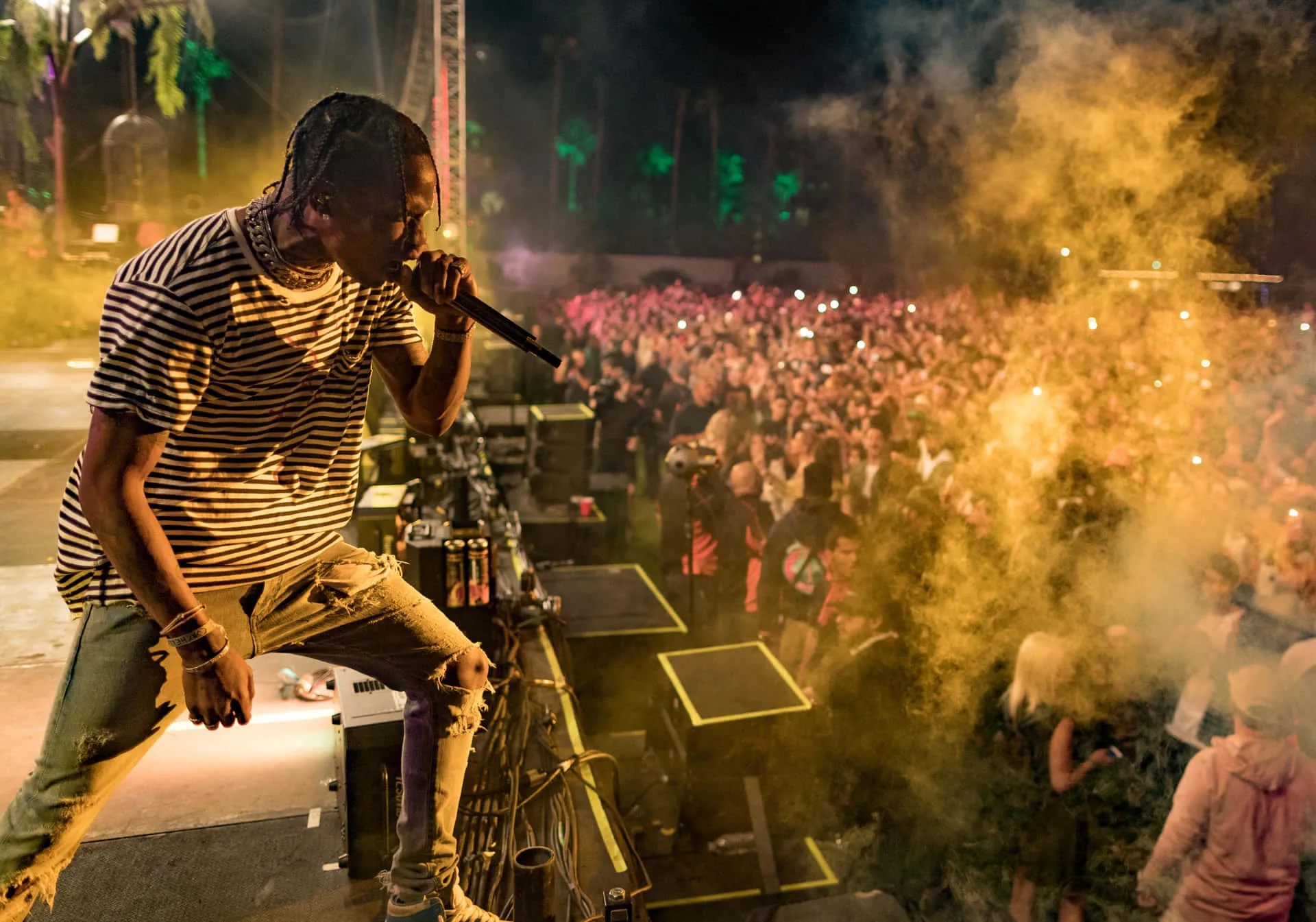
Utopia Realized – The Sonic Odyssey
Travis Scott’s Utopia era is a culmination of nearly a decade of experimentation, success, controversy, and rebirth. After years of teasing and building anticipation, Utopia finally dropped in 2023, and it landed like a sonic meteor—complex, layered, defiant, and futuristic. This album ushered in a new level of conceptual depth for Travis, not just musically, but visually and thematically. Naturally, the setlists that followed became masterclasses in world-building. These weren’t just concerts—they were immersive, cerebral journeys that took fans into a realm of dystopian soundscapes and thunderous euphoria.
The Circus Maximus tour and related performances reflect this next evolution in Scott’s artistry. Setlists now blend cinematic visuals, Gregorian choirs, and orchestral buildups with his traditional mosh pit anthems. Songs like “Hyaena,” “Thank God,” “Modern Jam,” and “Fein” don’t just play—they erupt, surrounded by lasers, multi-layered video effects, and new stagecraft techniques. But what’s equally compelling is how seamlessly Travis fuses Utopia tracks with his legacy catalog. In the same set, you might rage to “Goosebumps,” soar with “Stop Trying to Be God,” and then spiral into the hard-hitting “My Eyes” or “Til Further Notice.”
-
Circus Maximus Tour Opening Night – Charlotte (2023): The setlist debuted with “Hyaena,” followed by “Thank God,” “Fein,” and “Modern Jam.” Midway included “Stargazing,” “No Bystanders,” and “Goosebumps,” while the encore mixed “My Eyes” with “Sicko Mode.”
-
Rolling Loud Portugal (2023): Utopia takes center stage with “Meltdown,” “I Know?”, and “Sirens.” Mixed in classic tracks like “Mamacita” and “Pick Up the Phone.” The crowd screamed every word to “Fein.”
-
Circus Maximus – NYC (2023): A two-night performance series at Barclays. Opened with “Hyaena,” transitioned into “Stargazing,” “Thank God,” “Lose,” and closed night two with “Telekinesis” and “My Eyes.”
-
Made in America (2023): Special effects-driven set. Travis combined “God’s Country” with eerie ambient visuals and performed “Stop Trying to Be God” in full gospel mode before diving into “Fein” and “Meltdown.”
-
The Pyramid of Giza, Egypt – Utopia Concert (2023): A monumental performance. He played Utopia front to back in curated order: “Hyaena,” “Thank God,” “Modern Jam,” “Delresto,” “Sirens,” “Telekinesis,” “Parasail,” “K-pop.” Mixed in classics like “90210,” “Butterfly Effect,” and “Sicko Mode.” A career-defining show.
-
Lollapalooza Berlin (2023): European crowd embraced Utopia songs like “I Know?” and “Topia Twins.” Setlist included “Goosebumps,” “Can’t Say,” and “Highest in the Room.”
-
Austin City Limits (2023): Shortened set but hyper-focused. “Hyaena,” “Fein,” “No Bystanders,” “Antidote,” and a haunting “My Eyes” performed with a full video backdrop mimicking album art.
-
Paris Fashion Week x Dior Performance (2023): Fusion of art and music. Travis performed “Delresto,” “Circus Maximus,” and “Meltdown” at a high-concept show. No “Sicko Mode”—pure atmosphere and mood.
-
Circus Maximus – Atlanta (2023): Played “Til Further Notice” live for the first time with piano intro. The setlist flowed into “Drugs You Should Try It,” “Skeletons,” and a heavy “Fein” remix with new ad-libs.
-
Utopia World Tour Finale – Los Angeles (2023): A full-album performance of Utopia with surprise transitions into “Goosebumps,” “Maria I’m Drunk,” “Stargazing,” and “Escape Plan.” Encore was “My Eyes” with a slowed-down outro and light show timed to the bass drops.
This final group of setlists demonstrates Travis Scott at the peak of his creative and performance power. He’s no longer just commanding mosh pits—he’s conducting entire emotional symphonies. Utopia introduced new complexities to his concerts: longer transitions, extended intros, multi-phase songs, choreographed lighting, and even costume changes. These performances aren’t just concerts—they’re audio-visual storytelling experiences, carefully paced like epic films. The setlists are layered, structured to build narrative and tension, climaxing in explosive rage or introspective breakdowns.
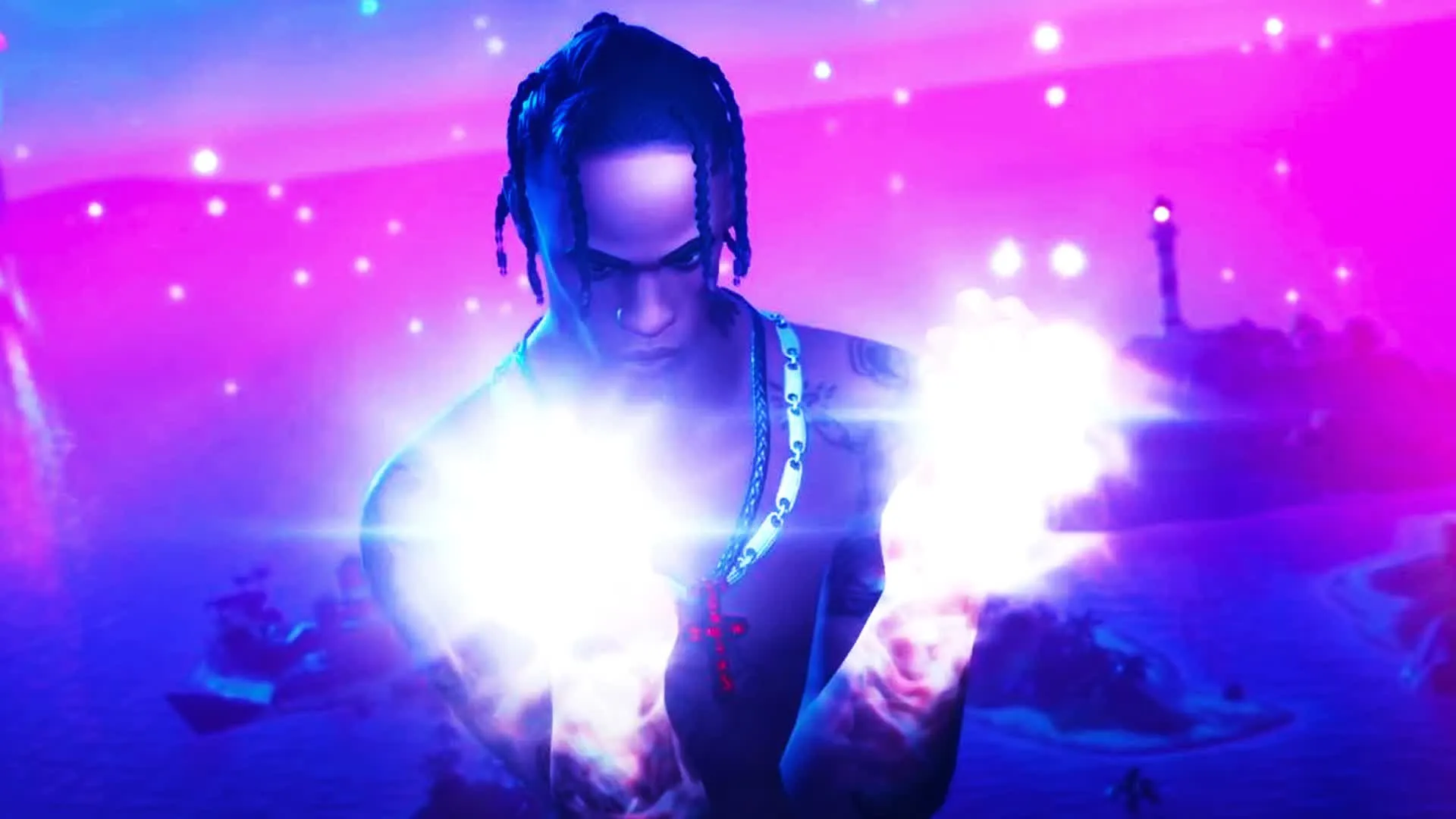
Travis Scott has redefined what a hip-hop concert can be—not just through his music, but through the design and intention of his setlists. Across all fifty performances we’ve examined, his live shows have evolved from gritty club mosh pits to genre-bending, stadium-filling visual odysseys. Each setlist isn’t just a playlist of hits—it’s a narrative framework, a roadmap through rage, reflection, celebration, and transcendence. Whether performing in intimate venues during his Owl Pharaoh days, riding mechanical birds during the Birds Eye View tour, unveiling his psychedelic amusement park in Astroworld, or elevating his shows into cinematic experiences with Utopia, Travis has mastered the art of crafting moments.
His concerts are meticulously orchestrated chaos—built on the tension between unpredictability and precision. He knows exactly when to drop “Goosebumps” to spark an eruption, or when to slide into “Stop Trying to Be God” to shift the emotional temperature. His ability to pace a set, to take the audience on a ride, is unparalleled. And while his production continues to get bigger, louder, and more visually stunning, it’s the music—the setlist—that remains the heartbeat of it all.
